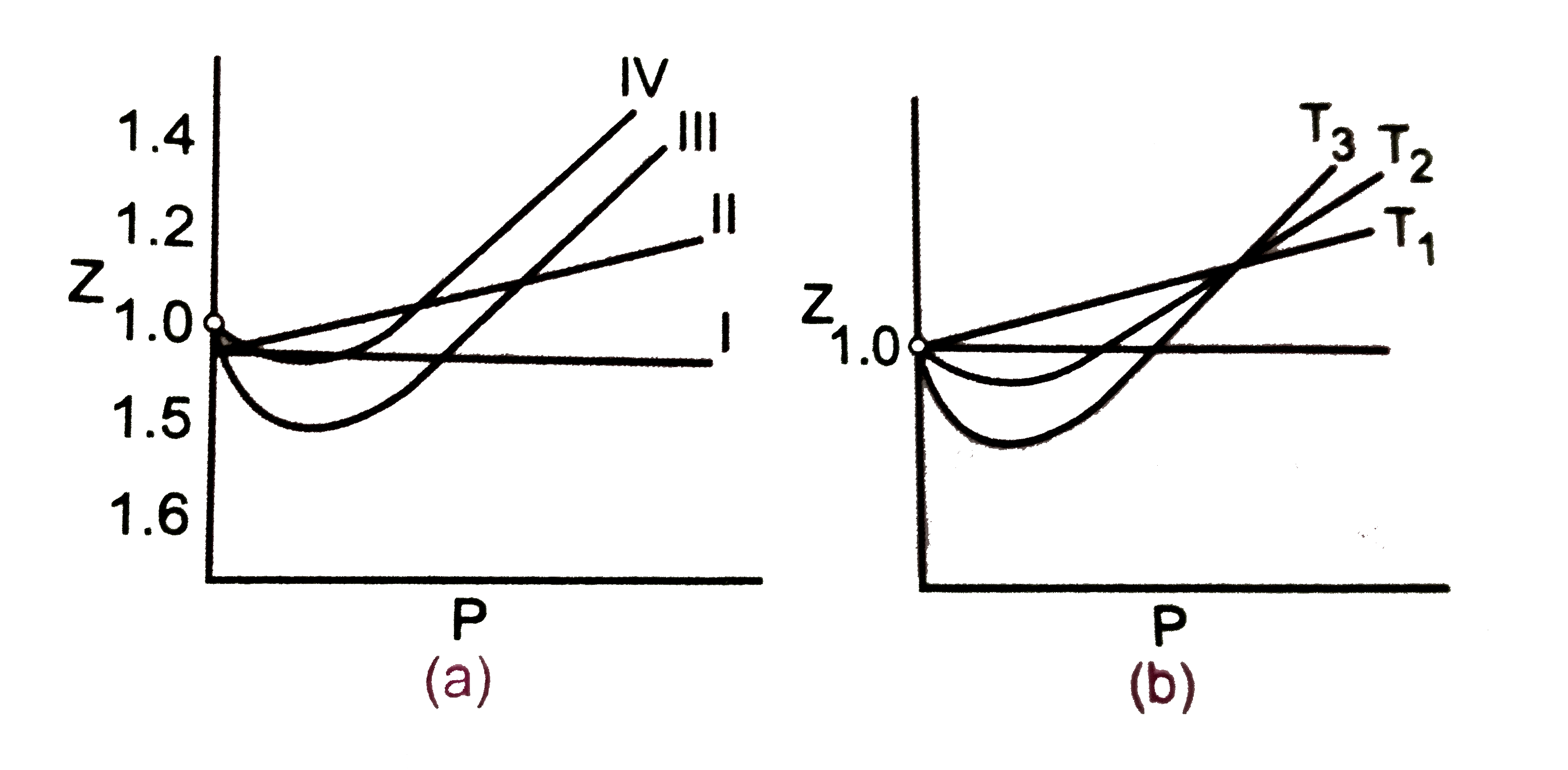Real gases show deviations from ideal behaviour. Consequently, the observed molar volume of a gas is found to be different from theoretically calculated volume from ideal gas equation. The extent of deviation is measured in terms of compressibility factor, Z. It is found that gases which can be liquefied easily show largerdeviation. Further, it is found that higher the speed of the gas molecules, less are the deviations. However, for evergy gas, there is a particular temperature above which they show ideal bahaviour over an appreciable range of pressure. This temperature is called Boyletemperature. The plots of compressibility factor versus pressure for a few gases and for the same gas at different temperatures and for the same gas at different temperatures are given below in Figs (a) and (b) respectively.The ideal gas equation has, therefore, been modified and for real gases, we apply vab der Waals equation, (P+aV2)(V−b)=RT for 1 mole of the gas.

If V0 is the observed volume of a gas and Vi is the ideal gas or volume, then the compressibility factor (Z) for the gas is
A
V∘Vi
B
ViV∘
C
V∘.Vi
D
V∘−Vi
Text Solution
The correct Answer is:A,B,C,D
z=vrealVideal=V∘Vi
|
Topper's Solved these Questions
- STATES OF MATTER : GASES AND LIQUIDESBOOK - PRADEEPCHAPTER - STATES OF MATTER : GASES AND LIQUIDESEXERCISE - IV MATCHING TYPE QUESTIONS
1 Videos
- STATES OF MATTER : GASES AND LIQUIDESBOOK - PRADEEPCHAPTER - STATES OF MATTER : GASES AND LIQUIDESEXERCISE - V MATRIX-MATCH TYPE QUESTIONS
2 Videos
- STATES OF MATTER : GASES AND LIQUIDESBOOK - PRADEEPCHAPTER - STATES OF MATTER : GASES AND LIQUIDESEXERCISE - II. Multiple Choice Questions
7 Videos
- SOME p-BLOCK ELEMENTSBOOK - PRADEEPCHAPTER - SOME p-BLOCK ELEMENTSEXERCISE - Competition Focus (JEE( Main and Advanced)/Medical Entrance) VIII. Assertion-Reason Type Questions (Type I)
23 Videos
- STATES OF MATTER: SOLID MATTERBOOK - PRADEEPCHAPTER - STATES OF MATTER: SOLID MATTEREXERCISE - COMPETITION FOCUS (ASSERTION-REASON)
17 Videos
Similar Questions
Knowledge Check
Real gases show deviation from ideal behaviour at low temperature and high pressure.
Atemperature is low and pressure is highBtemperature si high and Pressure is lowCboth temperature and pressure are lowDboth temperature and pressure are highAny gas shows maximum deviation from ideal gas behaviour at
A0∘C and 1 atmospheric pressureB100∘C and 2 atmospheric pressureC–100∘C and 5 atmospheric pressureD500∘C and 1 atmospheric pressureGases show deviation from ideal behaviour at high pressure because :-
Atheir temperature increasesBmolecular interactions start operatingCcritical temperature increasesDkinetic energy of molecule increases
For a gas deviation from ideal behaviour is maximum at :
View SolutionFor a gas deviation from ideal behaviour is maximum at :
View SolutionReal gases deviate from an ideal behaviour because gas molecules
View SolutionGases deviate from the ideal gas behaviour because their molecules
View SolutionGases deviate from the ideal gas behaviour because their molecules
View Solution
